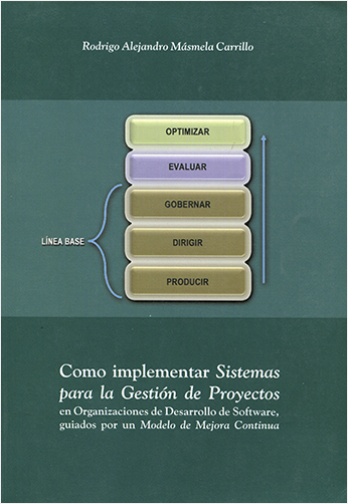Editorial: Excelic Press
- Item #: 1897
- Edición:
- Isbn : 9781642243789
- Año: 2020
- Páginas: 327
- Pasta : Dura
$4,320.00
Disponibilidad: En Stock
Notas: Envío inmediato
Project Management (PM) is widely accepted today as an important management tool in business development and business success. In this context, a large number of PM frameworks, methodologies and approaches have been developed over the past few decades. Due to the rapid development of the software industry today, software companies are now facing a highly competitive market. To succeed, companies have to make efficient project plans to reduce the cost of software construction Agile methodologies attempt to overcome these obstacles by changing the approach used to develop software and manage projects. Agile software development attempts to put the software being developed first and to acknowledge that the user requirements change, responding quickly to the users’ needs, producing frequent and regular, software releases, etc.
This book presents wide-ranging aspects of modern project management practices including a wealth of quality information that practitioners can apply to build their own tools. Ontology development in the field of project management and software engineering could benefit many verticals in software development by improving knowledge management, increasing the reusability of software and artifacts, and creating consistency among project management processes, which are to be applied in different phases of a software life cycle. In this book, we present a systematic literature review focusing on software project management ontologies. The IT Industry uses various methods to identify problems in software development projects. This book discusses COQUALMO, its limitations and how this model attempts to increase quality without the expense of money and time.
For a software project to proceed successfully, the correctness of the project must be evaluated in an objective manner at an early stage, to generate the most effective solution. However, few studies have been conducted on the reliable quantitative early judgment of correctness or incorrectness. A method that allows for quantitative decision making to evaluate a project is also presented. The book portrays analyzing the impact of different factors on software cost estimation in today’s scenario and enhancing software process management through control charts.
Technology is evolving at a rapid pace; the advent of new research births new technology, while the scope of improvement always persists. This presents a wide variety of options for organizations to choose from when they face technological problems. All the while, technology is evolving and becoming more complex, and the vast variety of solutions is making choosing one difficult. This book is also intended to describe the use of system dynamics models and simulations to assess technologies in the context of software engineering. This book dives into understanding what motivates the actions of large-scale IT companies and goes on to identify that technical inexperience or narcissistic leadership are often reasons for an underperforming project. This book will be of interest to readers from both academia and industry with its excellent balance between new discoveries and knowledge of their usage in new settings.






















































